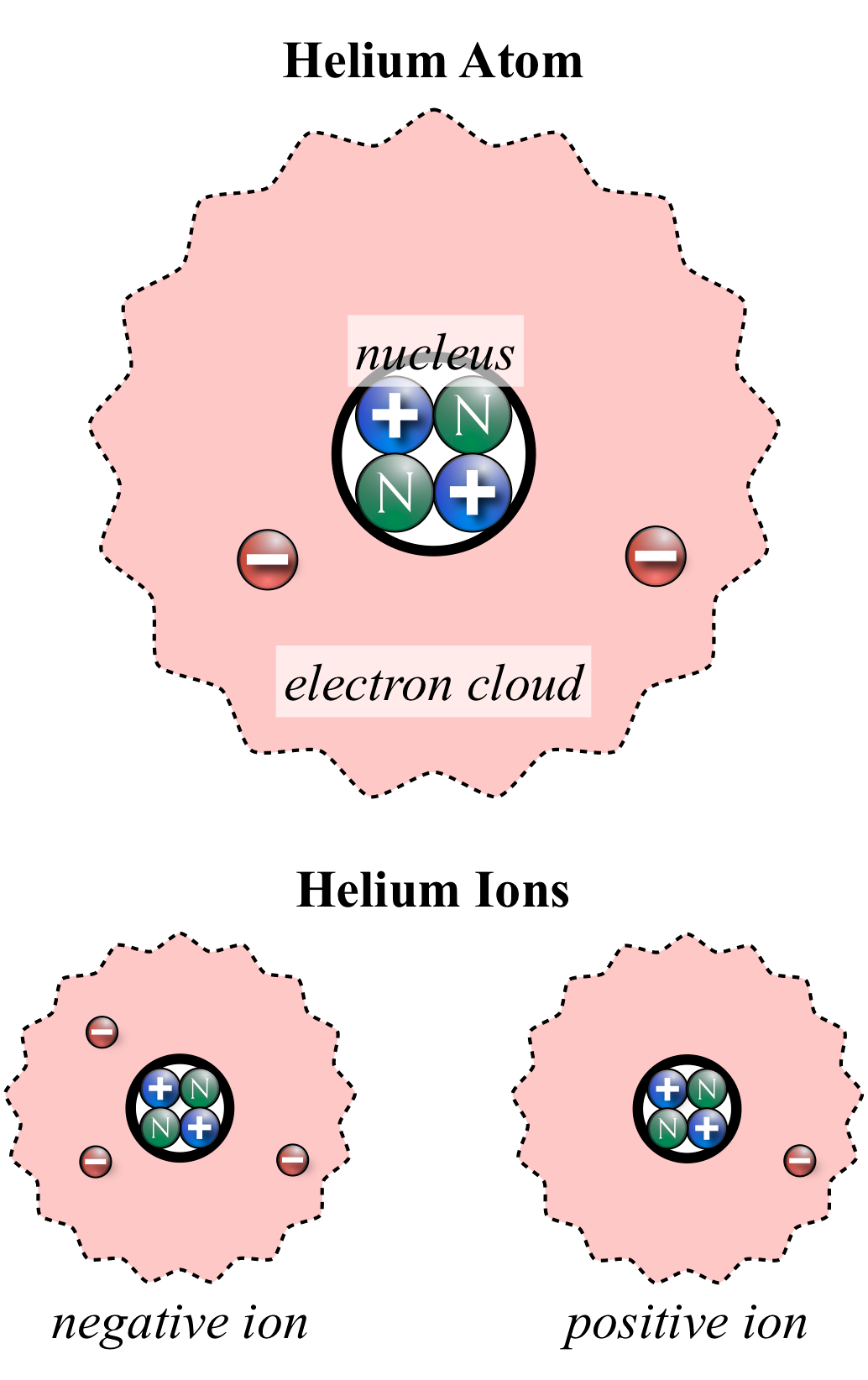Protons and Electrons
Physicists have discovered many subatomic particles with positive or negative charge, but when it comes to our everyday world, there are only two types of charged particles that matter: protons and electrons. This is because they are two of the three building blocks that make up atoms, and are the way in which atoms interact with each other to form molecules and undergo chemical reactions.
An atom is made up of a very tiny nucleus (about $10^{-15}\u{m}$ across) which consists of positively-charged protons and uncharged neutrons. The nucleus is surrounded by a cloud of negatively-charged electrons (which is much larger, about $10^{-10}\u{m}$ across). Because the protons are buried deep in the nucleus, atoms primarily interact via the exchange and interaction of their electrons.
Protons and electrons are very different from each other. The proton's mass is over 1800 times larger than the electron's mass. And while the proton has a definite size and is made up of three smaller objects called quarks, electrons have no structure and no size at all (as far as we know). It is therefore rather surprising that a proton and electron have equal and opposite charges: the proton has a charge of $+1.6\ten{-19}\u{C}$ (which we call $e$), and the electron has a charge of $-1.6\ten{-19}\u{C}$, or $-e$.
This is more than just fortuitous; if the charges were just a little bit different, then atoms could never be neutral. As it is, a normal atom has an equal number of $Z$ protons and $Z$ electrons, and so its net charge is $q=Z(+e) + Z(-e)=0$. Sometimes an atom loses or gains extra electrons, in which case it is positively (if it lost electrons) or negatively (if it gained electrons) charged.